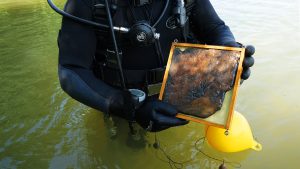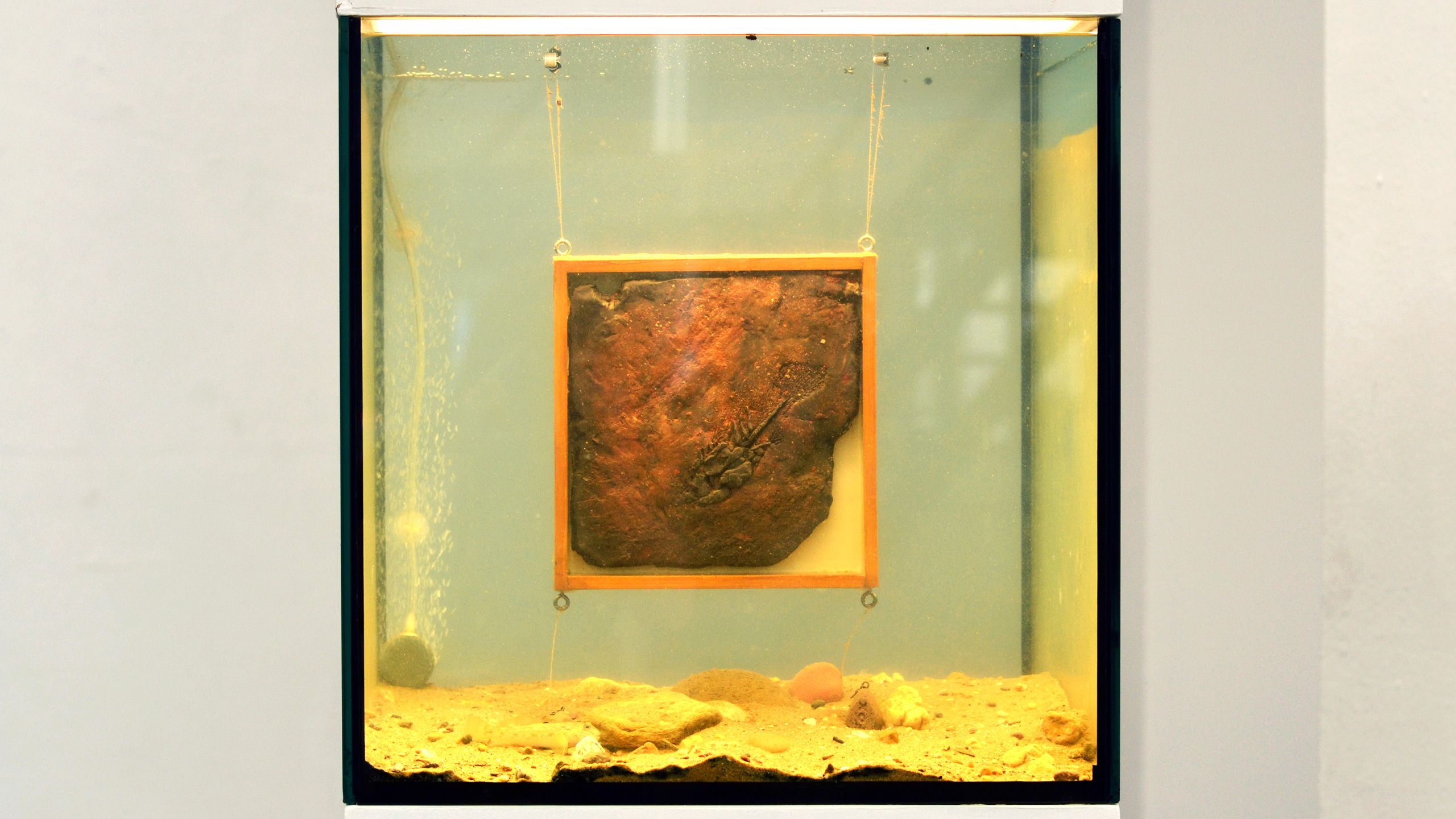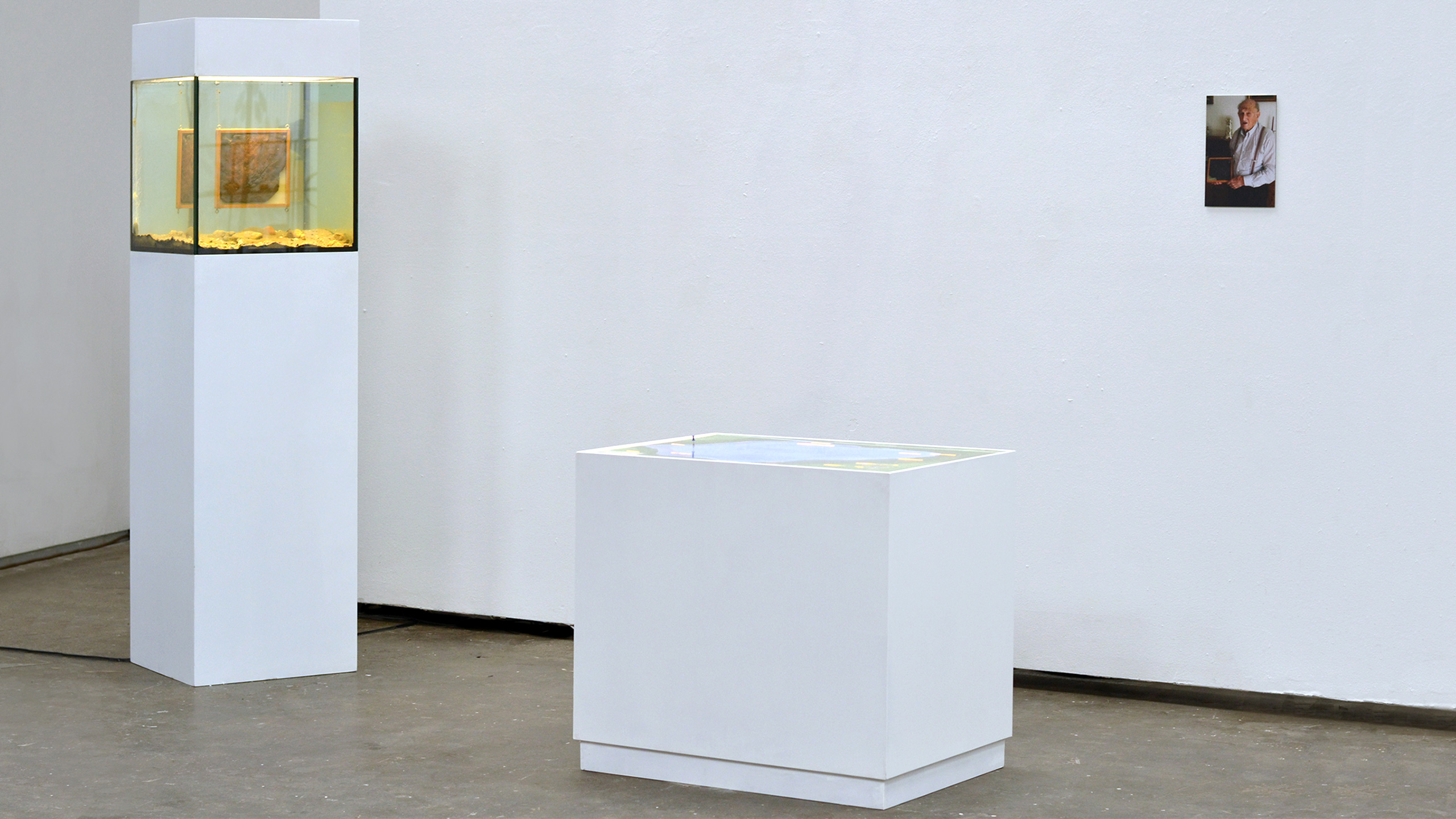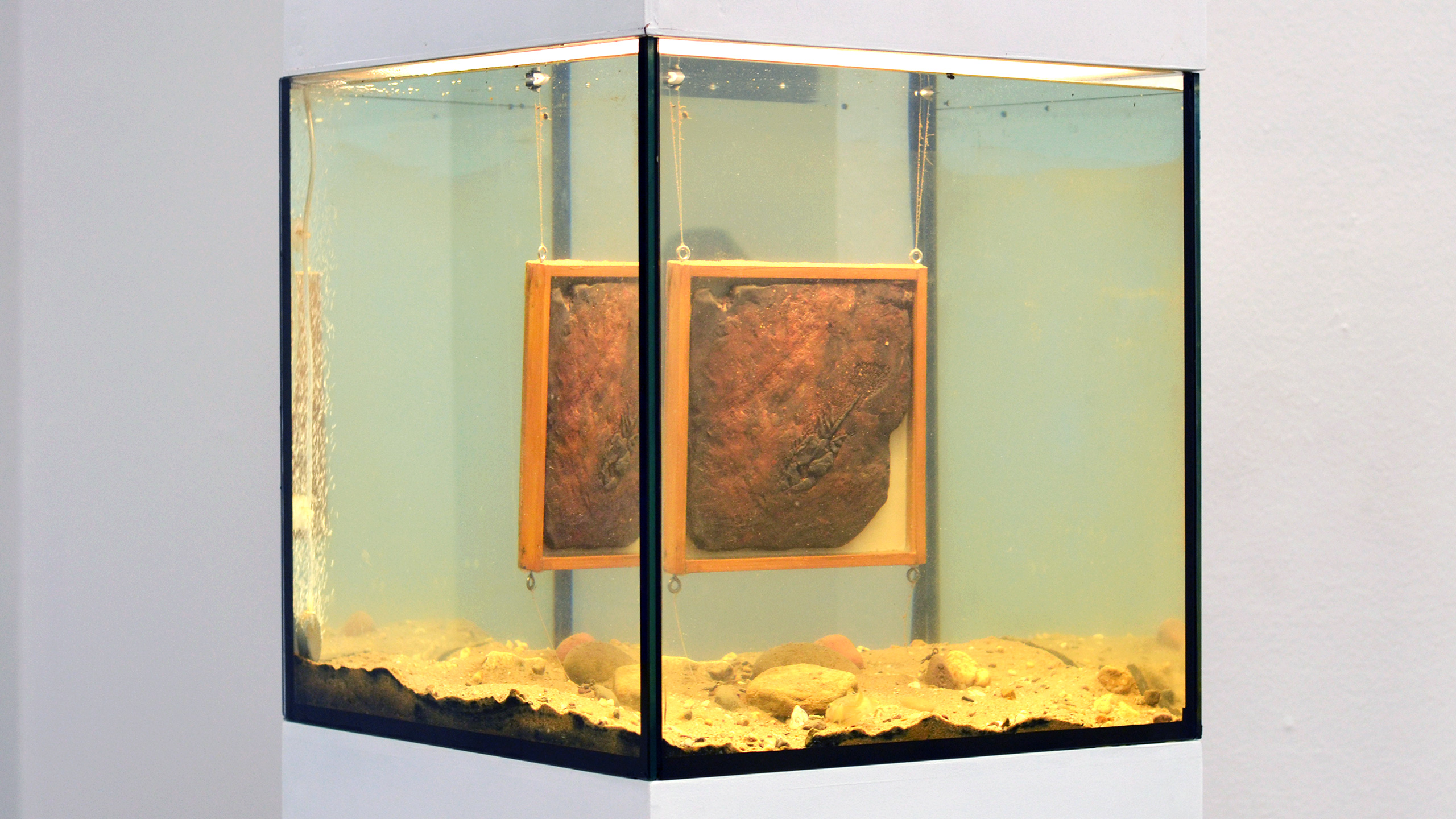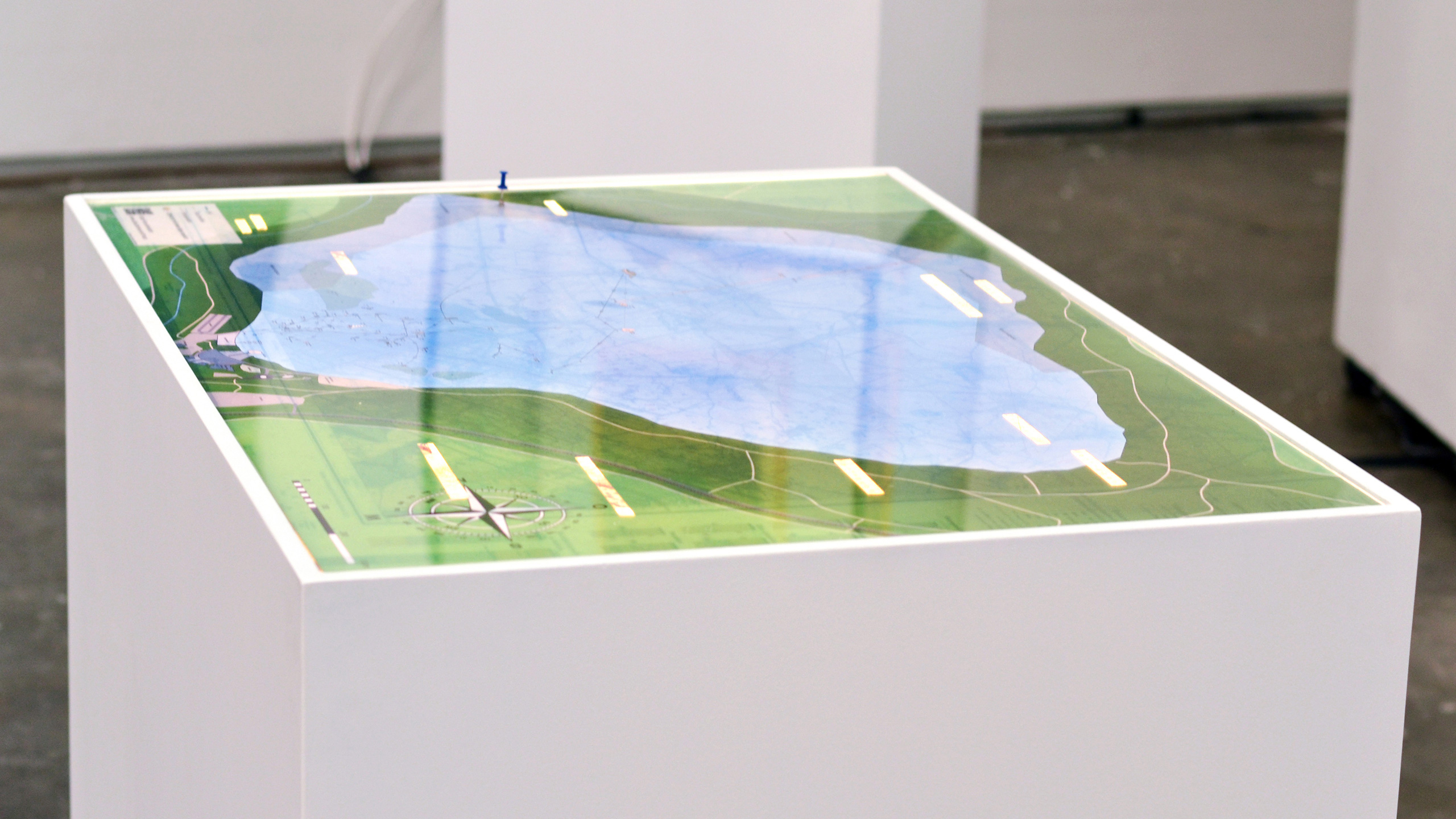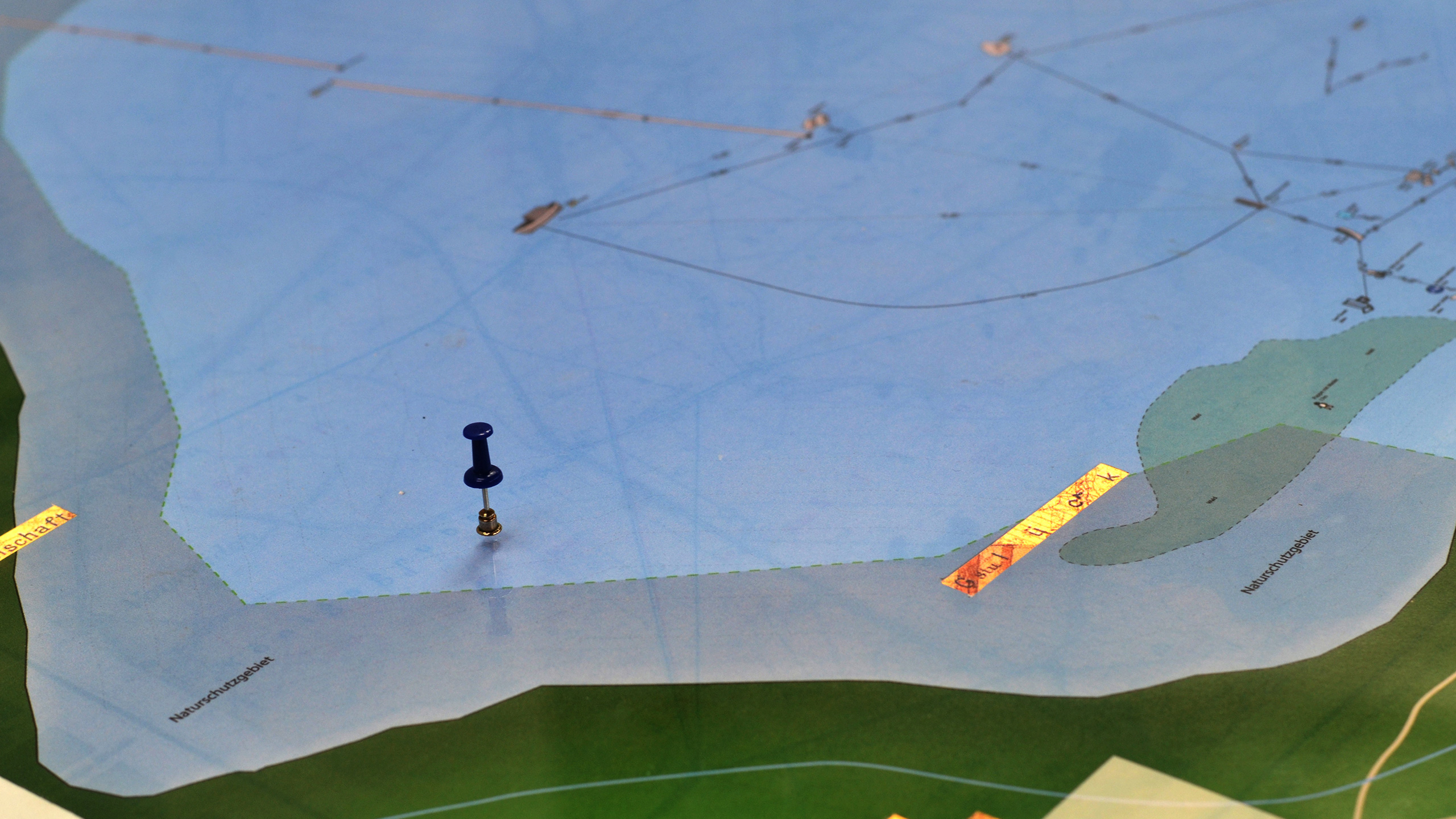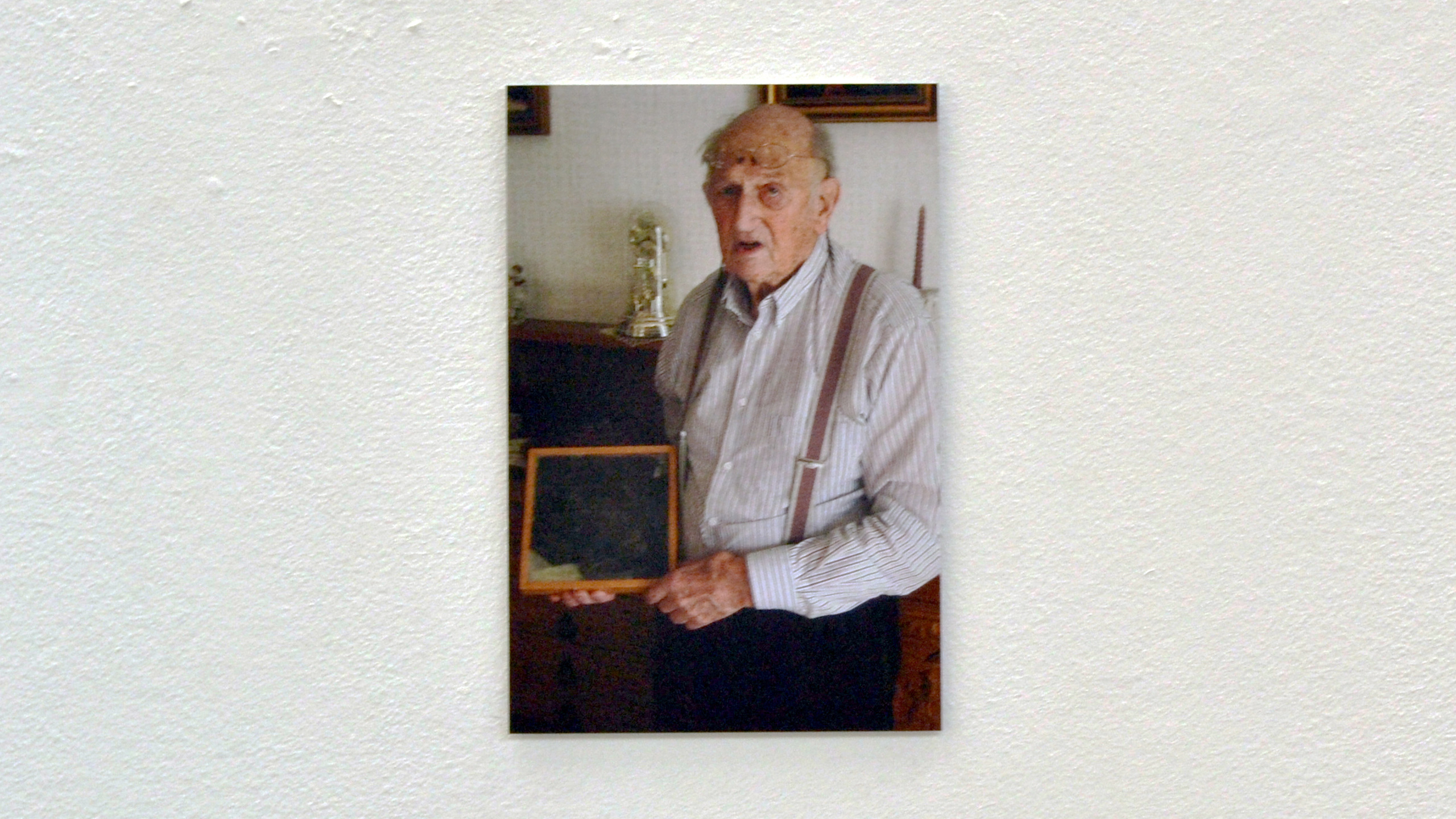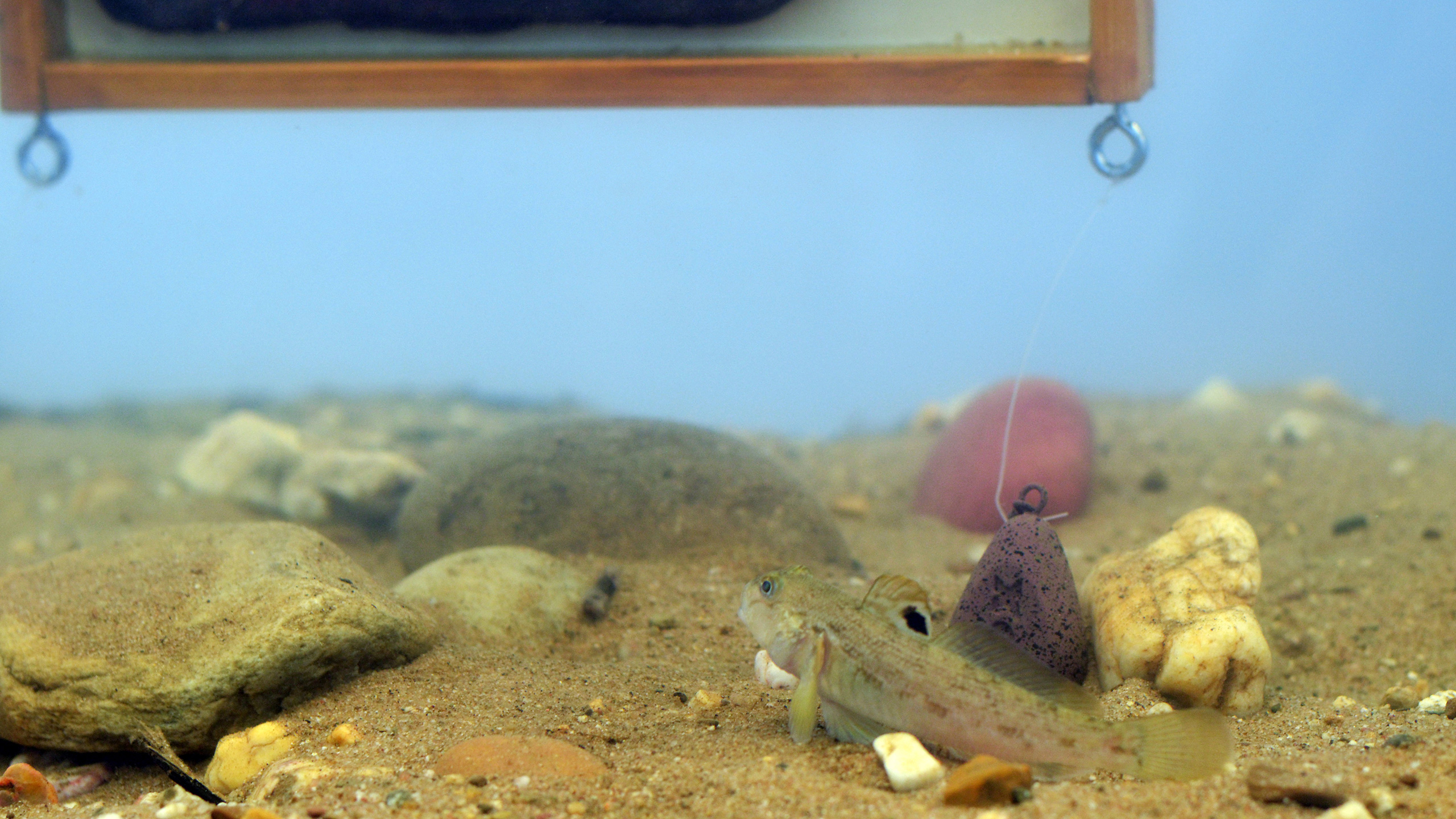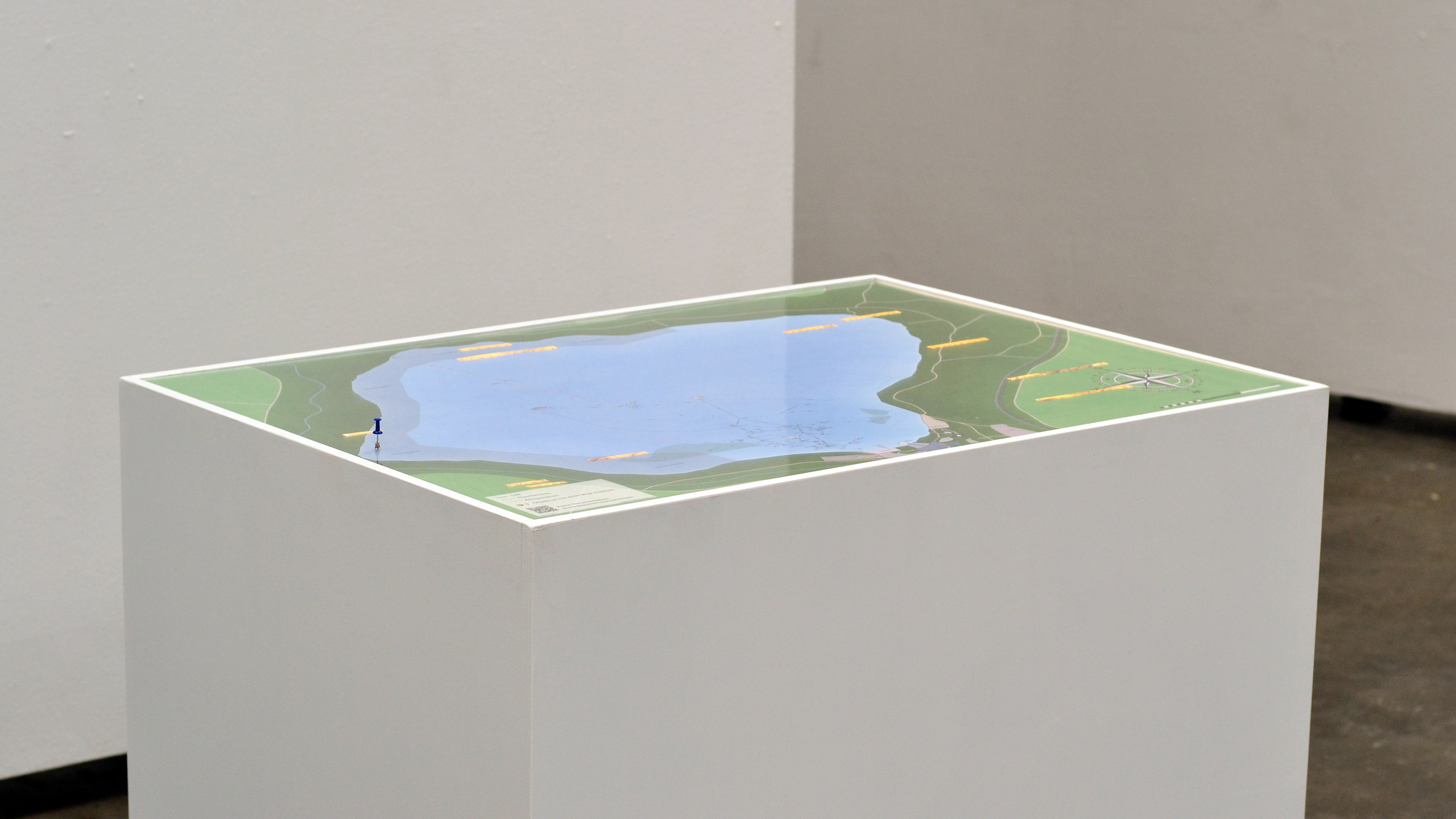The installation focuses on the discovery of a unique fossil from the “Zukunft-West” (Future-West) lignite quarry in North Rhine-Westphalia, Germany. During excavations in this quarry, a 12 million years old fish fossil was found. Nowadays the quarry has been recultivated and transformed into a lake. The installation shows the first steps in a plan to return the fish fossil to the original location in the lake. For this installation, the finding place of the fossil was retraced on old maps of the quarry, and the original fish fossil was replicated, making it again fit for life underwater. In the second phase of the project the replica was returned to the lake.
⇓ Read more
In North-Rhine Westphalia, a border region in the west of Germany, large landscapes are being excavated for lignite. The practice leads to the largest excavation site in the world, unearthing many archaeological objects which are being archived in national musea. A popular method of dealing with the industrial excavation pits left in the landscape is to simply fill them with water, creating a tabula rasa within this landscape. Due to the fact that there is no local museum for the excavated land and villages, the landscape looses its natural and cultural characteristics, causing a sense of groundlessness amongst the local inhabitants.
The installation Descent into the Future (2020-2021) focuses on the discovery of a unique fossil from the “Zukunft-West” (Future-West) lignite quarry in North Rhine-Westphalia, Germany. During excavations in this quarry a 12 million years old fish fossil from the Miocene era was found. The discovery represents the only fossil of a fish found in the wider area, and symbolizes the sacrifice of living ecosystems for fossil fuel, a natural product created through the dying of ancient ecosystems. In the Anthropogenic era in which it surfaces, the fossil gives a unique insight into a non-human time period when this landscape was still covered with a prehistoric sea; and thus closes a cycle, since the quarry was again filled with water after the excavations, turning it into the ‘Blausteinsee’.
Descent into the Future I: Installation
The installation Descent into the Future (2020) shows a set-up for a temporary underwater museum for divers. For this installation, the finding place of the fossil was retraced on old maps of the quarry, and the original fish fossil was replicated using 3D-scan technology and clay, making it again fit for life underwater. In order to acquire a sense of place, the contemporary geographical and diver map of the Blausteinsee were merged with historical maps of the ‘old’ landscape, creating an historical overlap. In the installation, the fish fossil is shown together with the Round Goby, the fish which ascended from the fossil, and the water of the Blausteinsee. By bringing the fish together with the current chemical composition of the water from the lake (a chemistry which is influenced by industrial remnants within the water) an exchange between the past and the present of the landscape is being established.
